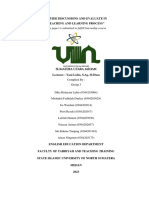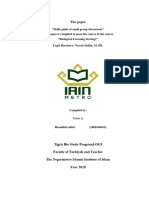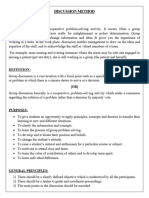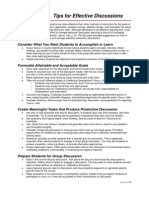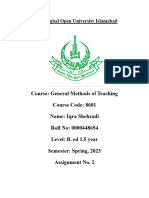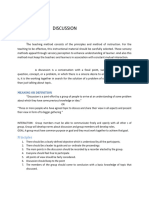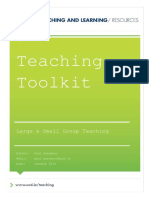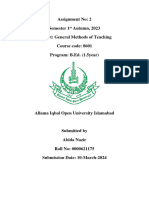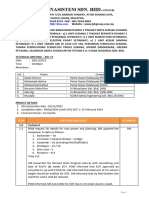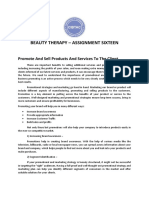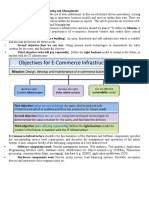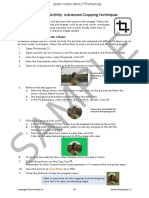0% found this document useful (0 votes)
71 views5 pagesMicroteaching Skill (Group Discussion)
The document discusses the definition and significance of small group discussions in teaching, highlighting benefits such as enhanced engagement, development of critical thinking, and social skills. It outlines practical applications for implementing group discussions, including setting clear objectives and monitoring group dynamics. Best practices are also provided, such as using open-ended questions and encouraging reflection after discussions.
Uploaded by
Dwi MaharaniCopyright
© © All Rights Reserved
We take content rights seriously. If you suspect this is your content, claim it here.
Available Formats
Download as PDF, TXT or read online on Scribd
0% found this document useful (0 votes)
71 views5 pagesMicroteaching Skill (Group Discussion)
The document discusses the definition and significance of small group discussions in teaching, highlighting benefits such as enhanced engagement, development of critical thinking, and social skills. It outlines practical applications for implementing group discussions, including setting clear objectives and monitoring group dynamics. Best practices are also provided, such as using open-ended questions and encouraging reflection after discussions.
Uploaded by
Dwi MaharaniCopyright
© © All Rights Reserved
We take content rights seriously. If you suspect this is your content, claim it here.
Available Formats
Download as PDF, TXT or read online on Scribd
/ 5
